 W
WAt the University of Cambridge in England, a "Wrangler" is a student who gains first-class honours in the third year of the University's undergraduate degree in mathematics. The highest-scoring student is the Senior Wrangler, the second highest is the Second Wrangler, and so on. At the other end of the scale, the person who achieves the lowest exam marks while still earning a third-class honours degree is known as the wooden spoon.
 W
WThe Senior Wrangler is the top mathematics undergraduate at Cambridge University in England, a position which has been described as "the greatest intellectual achievement attainable in Britain."
 W
WWalter William Rouse Ball, known as W. W. Rouse Ball, was a British mathematician, lawyer, and fellow at Trinity College, Cambridge, from 1878 to 1905. He was also a keen amateur magician, and the founding president of the Cambridge Pentacle Club in 1919, one of the world's oldest magic societies.
 W
WErnest William Barnes was a British mathematician and scientist who later became a liberal theologian and bishop.
 W
WThomas Rawson Birks was an English theologian and controversialist, who figured in the debate to try to resolve theology and science. He rose to be Knightbridge Professor of Moral Philosophy at the University of Cambridge. His discussions led to much controversy: in one book he proposed that stars cannot have planets as this would reduce the importance of Christ's appearance on this planet.
 W
WWilliam Burnside was an English mathematician. He is known mostly as an early researcher in the theory of finite groups.
 W
WTemple Chevallier FRAS was a British clergyman, astronomer, and mathematician. Between 1847 and 1849, he made important observations regarding sunspots. Chevallier has been called "a remarkable Victorian polymath". Not only did he write many papers on astronomy and physics, he also published a translation of the Apostolic Fathers that went into a second edition, and translated the works of Clement of Alexandria, Polycarp and Ignatius of Antioch.
 W
WSamuel Hunter Christie FRS was a British scientist, physicist and mathematician.
 W
WGeorge Chrystal FRSE FRS(8 March 1851 – 3 November 1911) was a Scottish mathematician. He is primarily remembered for his books on algebra and for his studies of seiches which earned him a Gold Medal from the Royal Society of London.
 W
WWilliam Kingdon Clifford was an English mathematician and philosopher. Building on the work of Hermann Grassmann, he introduced what is now termed geometric algebra, a special case of the Clifford algebra named in his honour. The operations of geometric algebra have the effect of mirroring, rotating, translating, and mapping the geometric objects that are being modelled to new positions. Clifford algebras in general and geometric algebra in particular have been of ever increasing importance to mathematical physics, geometry, and computing. Clifford was the first to suggest that gravitation might be a manifestation of an underlying geometry. In his philosophical writings he coined the expression mind-stuff.
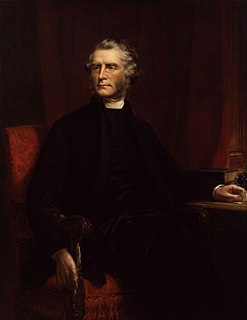 W
WJohn William Colenso was a Cornish cleric and mathematician, defender of the Zulu and biblical scholar, who was the first Bishop of Natal. He was a scholar of the Zulu language. As a churchman, he is now remembered for his theological views of the Bible, that set off intense controversy.
 W
WLeonard Henry Courtney, 1st Baron Courtney of Penwith was a radical British politician, and an academic, who became famous after being advocate of proportional representation in Parliament and acting as an opponent of imperialism and militarism.
 W
WSir George Howard Darwin, was an English barrister and astronomer, the second son and fifth child of Charles Darwin and Emma Darwin.
 W
WWilliam Cavendish, 7th Duke of Devonshire,, styled as Lord Cavendish of Keighley between 1831 and 1834 and known as The Earl of Burlington between 1834 and 1858, was a British landowner, benefactor, nobleman, and politician.
 W
WSir Frank Watson Dyson, KBE, FRS, FRSE was an English astronomer and Astronomer Royal who is remembered today largely for introducing time signals ("pips") from Greenwich, England, and for the role he played in proving Einstein's theory of general relativity.
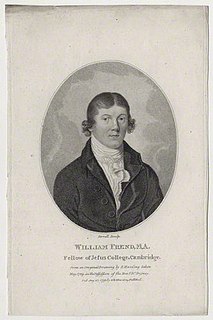 W
WWilliam Frend was an English clergyman, social reformer and writer. After a high-profile university trial in Cambridge, which deprived him of his residency rights as fellow of his college, he became a leading figure in London radical circles.
 W
WJohn Frere was an English antiquary and a pioneering discoverer of Old Stone Age or Lower Palaeolithic tools in association with large extinct animals at Hoxne, Suffolk in 1797.
 W
WJames Whitbread Lee Glaisher FRS FRSE FRAS, son of James Glaisher and Cecilia Glaisher, was a prolific English mathematician and astronomer. His large collection of (mostly) English ceramics was mostly left to the Fitzwilliam Museum in Cambridge.
 W
WSir Alfred George Greenhill, FRS FRAeS, was a British mathematician.
 W
WJohn Hymers (1803–1887) was an English mathematician and cleric, and, together with his brother Robert, founder of Hymers College, Hull.
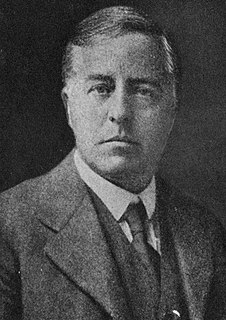 W
WSir James Hopwood Jeans was an English physicist, astronomer and mathematician.
 W
WJohn Jebb (1736–1786) was an English divine, medical doctor, and religious and political reformer.
 W
WWilliam Thomson, 1st Baron Kelvin, was a British mathematical physicist and engineer born in Belfast. Professor of Natural Philosophy at the University of Glasgow for 53 years, he did important work in the mathematical analysis of electricity and formulation of the first and second laws of thermodynamics, and did much to unify the emerging discipline of physics in its modern form. He received the Royal Society's Copley Medal in 1883, was its President 1890–1895, and in 1892 was the first British scientist to be elevated to the House of Lords.
 W
WSamuel Laing was a British railway administrator, politician, and writer on science and religion during the Victorian era.
 W
WSir Horace Lamb was a British applied mathematician and author of several influential texts on classical physics, among them Hydrodynamics (1895) and Dynamical Theory of Sound (1910). Both of these books remain in print. The word vorticity was coined by Lamb in 1916.
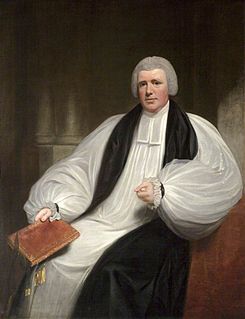 W
WGeorge Henry Law was the Bishop of Chester (1812) and then, from 1824, Bishop of Bath and Wells.
 W
WThe Reverend Edward Tucker Leeke (1842–1925) was a British clergyman and scholar. He was Canon and sub-dean of Lincoln Cathedral.
 W
WAugustus Edward Hough Love FRS, often known as A. E. H. Love, was a mathematician famous for his work on the mathematical theory of elasticity. He also worked on wave propagation and his work on the structure of the Earth in Some Problems of Geodynamics won for him the Adams prize in 1911 when he developed a mathematical model of surface waves known as Love waves. Love also contributed to the theory of tidal locking and introduced the parameters known as Love numbers, which are widely used today. These numbers are also used in problems related to the tidal deformation of the Earth due to the gravitational attraction of the Moon and Sun.
 W
WJohn Singleton Copley, 1st Baron Lyndhurst, was a British lawyer and politician. He was three times Lord High Chancellor of Great Britain.
 W
WHerbert Marsh was a bishop in the Church of England.
 W
WAlfred Marshall was an English economist, who was one of the most influential economists of his time. His book, Principles of Economics (1890), was the dominant economic textbook in England for many years. It brings the ideas of supply and demand, marginal utility, and costs of production into a coherent whole. He is known as one of the founders of neoclassical economics.
 W
WJames Clerk Maxwell was a Scottish scientist in the field of mathematical physics. His most notable achievement was to formulate the classical theory of electromagnetic radiation, bringing together for the first time electricity, magnetism, and light as different manifestations of the same phenomenon. Maxwell's equations for electromagnetism have been called the "second great unification in physics" where the first one had been realised by Isaac Newton.
 W
WGeorge Peacock FRS was an English mathematician and Anglican cleric. He founded what has been called the British algebra of logic.
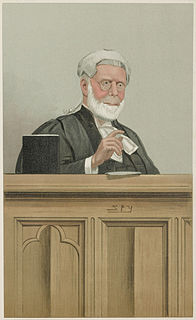 W
WSir John Rigby, PC, was a British judge and Liberal politician who sat in the House of Commons between 1885 and 1894.
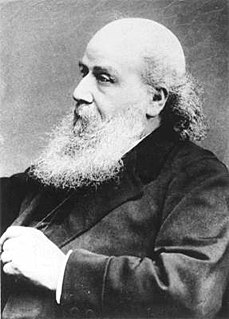 W
WJames Joseph Sylvester FRS HFRSE was an English mathematician. He made fundamental contributions to matrix theory, invariant theory, number theory, partition theory, and combinatorics. He played a leadership role in American mathematics in the later half of the 19th century as a professor at the Johns Hopkins University and as founder of the American Journal of Mathematics. At his death, he was a professor at Oxford.
 W
WSir Joseph John Thomson was a British physicist and Nobel Laureate in Physics, credited with the discovery of the electron, the first subatomic particle to be discovered.
 W
WGilbert Wakefield was an English scholar and controversialist.
 W
WRev. Henry William Watson FRS was a mathematician and author of a number of mathematics books. He was an ordained priest and Cambridge Apostle.
 W
WRichard Watson (1737–1816) was an Anglican bishop and academic, who served as the Bishop of Llandaff from 1782 to 1816. He wrote some notable political pamphlets. In theology, he belonged to an influential group of followers of Edmund Law that included also John Hey and William Paley.
 W
WRev Dr William Whewell DD was an English polymath, scientist, Anglican priest, philosopher, theologian, and historian of science. He was Master of Trinity College, Cambridge. In his time as a student there, he achieved distinction in both poetry and mathematics.
 W
WSir Edmund Taylor Whittaker FRS FRSE LL.D. Sc.D. was an early 20th-century British mathematician, physicist, and historian of science. Whittaker was a leading mathematical scholar of the early twentieth century who contributed widely to applied mathematics and was renowned for his research in mathematical physics and numerical analysis, including the theory of special functions, along with his contributions to astronomy, celestial mechanics, the history of physics, and digital signal processing. Among the most influential publications in Whittaker’s bibliography, he authored several popular reference works in mathematics, physics, and the history of science, including A Course of Modern Analysis, Analytical Dynamics of Particles and Rigid Bodies, and A History of the Theories of Aether and Electricity. Whittaker is also remembered for his role in the relativity priority dispute, as he credited Henri Poincaré and Hendrik Lorentz for developing special relativity in the second volume of his History, a dispute which has lasted several decades, though scientific consensus has remained with Einstein. Whittaker served as the Royal Astronomer of Ireland early in his career, a position he held from 1906 through 1912, before moving on to the chair of mathematics at the University of Edinburgh for the next three decades and, towards the end of his career, received the Copley Medal and was knighted. The School of Mathematics of the University of Edinburgh holds The Whittaker Colloquium, a yearly lecture, in his honour and the Edinburgh Mathematical Society promotes an outstanding young Scottish mathematician once every four years with the Sir Edmund Whittaker Memorial Prize, also given in his honour.
 W
WGeorge Wollaston (1738–1826) was an English Anglican priest. He was elected a Fellow of the Royal Society in 1763.